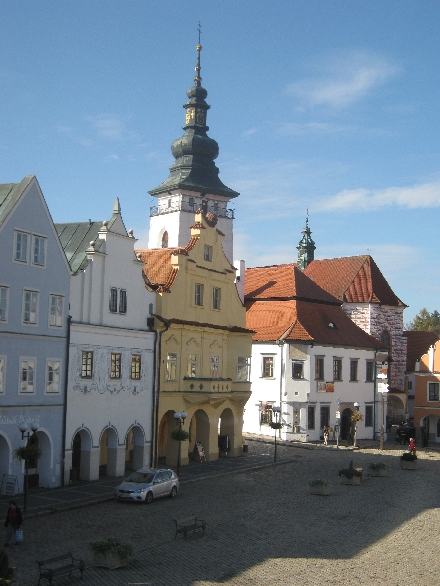
As I mentioned in my previous post about the Church of St Bartholomew, here is the promised further illustrated post about the town of Pelhrimov itself, which we visited earlier this week on Tuesday 22nd October 2013.
Pelhrimov lies a short distance off the D1, the Prague-Brno motorway, just over one hundred kilometres south east of Prague. It should only take about an hour and a quarter to drive there but took us nearer one hour and forty minutes, because of traffic delays getting across and out of Prague. Like many Czech towns, there is industry and Communist era paneláks around the outskirts, but there is also a historic, well-preserved and restored centre, with many attractive buildings. Having found a suitable parking place for the car, we set out for the main square, Masarykovo námestí.
It being lunchtime, we first looked to find a place to eat. We opted for a pizzeria on the first floor of Hotel Slávie, overlooking the square from where this photograph was taken. Both the food and the view were excellent!
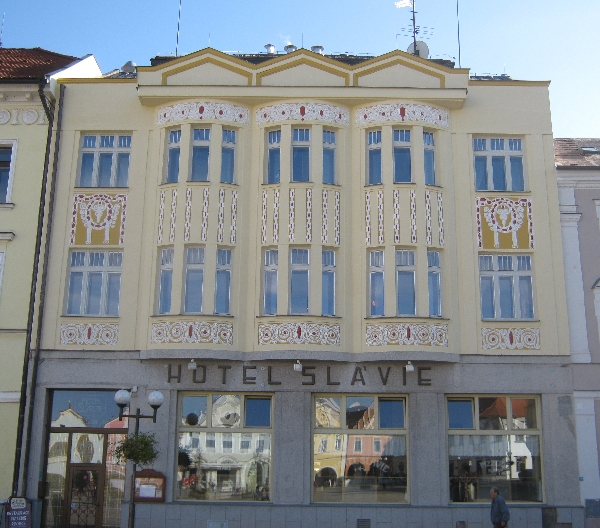
Hotel Slávie has a wonderful cubist façade as you can see in the photograph above. After lunch here, we set out to explore a variety of architectural gems around the square. Most have their current form after rebuilding following a serious fire in 1736.
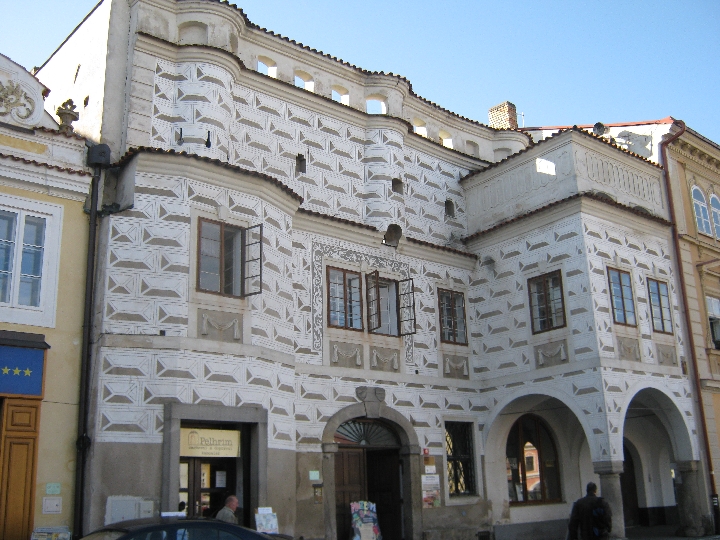
Like the Church of St. Bartholomew, this building also features sgraffiti decoration.
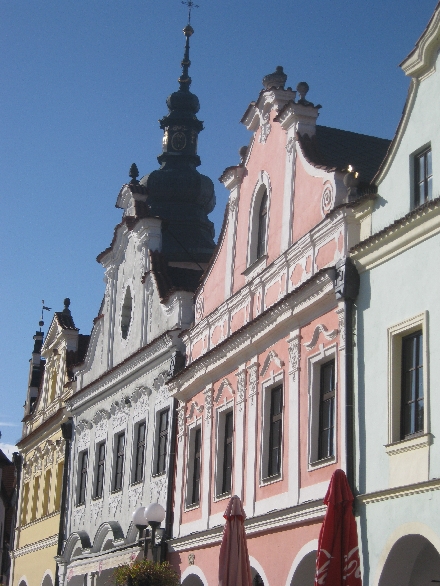
On the opposite side of the square from Hotel Slávie are these Italianate style buildings, very similar to those in Telc which we visited previously, three years ago.
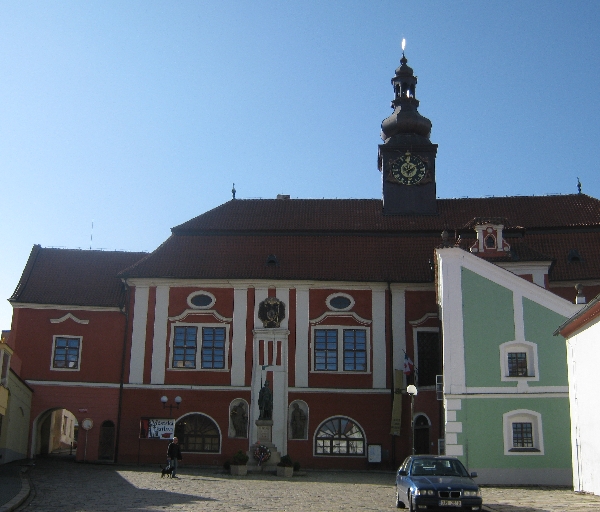
Just off the square and adjacent to the Church is this Zámek/Château, completed in 1554. At one end is one of three town gatehouses that still exist, giving access to the historic centre of the town. The Zámek itself now serves as part of the Pelhrimov Museum.
|
|
Here on the left, is a close-up view of the clock on top of the Zámek. The two characters either side of the clock-face, swing their implements, striking the little bell at the top, in time with clock striking the hour. The clock-face itself illustrates past history as it features a double-headed eagle, the symbol of the Austro-Hungarian Empire. In the photograph on the right is another of the town gatehouses.
|
|
|
Here are two examples of beautifully restored arcaded buildings. The one on the right features sgrafitti illustrations including, between the two windows on the left of the photograph, the Virgin and Child. But it is also an example of ‘only in the Czech Republic’, as the building is now used as a Herna (gambling) Bar 🙁 The ground floor windows are totally obscured to prevent anyone looking in.
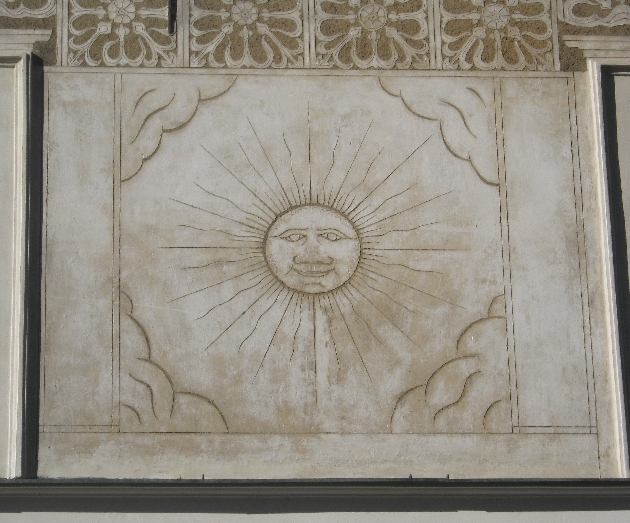
Above is one of my favourite examples of sgraffiti decoration in Pelhrimov – a big smiling sun!
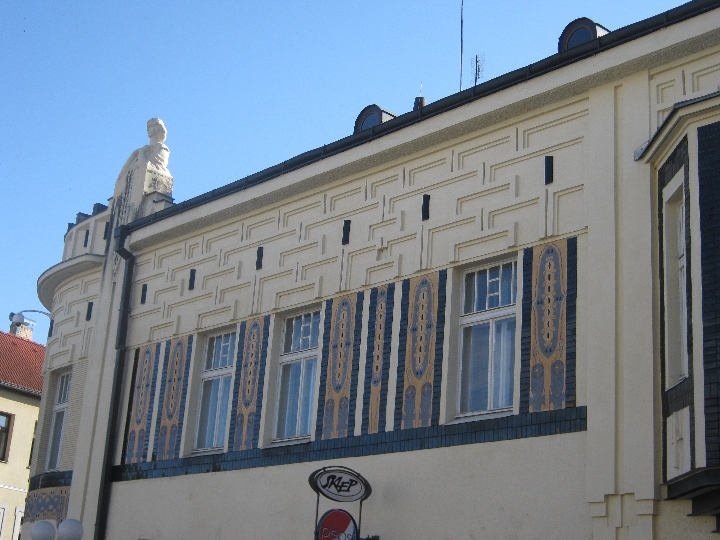
Whilst I also love the style and artwork decorating this building which I presume dates from the time of the First Republic 1918-1938.
|
|
|
As Sybille and I, at different times, have both made a walking pilgrimage to Santiago de Compostela, we were surprised but also delighted to discover a statue of St. James. He stands on a pillar, in the middle of a fountain, at the centre of Masarykovo námestí. He is dressed in pilgrim’s vesture decorated with scallop shells, carries a water gourd, and holds a pilgrim staff with a cross at the top. We also found this more modern metal sculpture in the covered passageway leading to the tourist information centre.
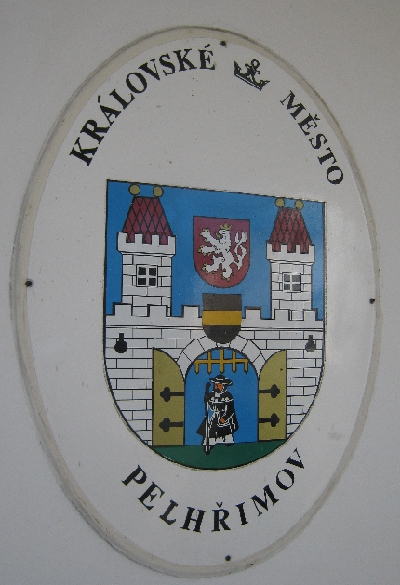
The town takes its name from the Latin word for pilgrim – peregrinus. As can be seen here, the town coat-of-arms features a pilgrim, walking through one of the town gates. There are various related explanations, both to the origin of the town and its name, but all revolve around the Bishop of Prague between 1224-1225 who was Peregrinus of Wartenberg. He apparently passed through what is now Pelhrimov whilst on a pilgrimage, but his destination was Rome rather than Santiago!
The town council tourist information website explains this discrepancy by saying that St. James is the patron saint of pilgrims. Therefore, as the town derives its name from the word ‘pilgrim’, St. James can be deemed to be the patron saint of Pelhrimov 🙂


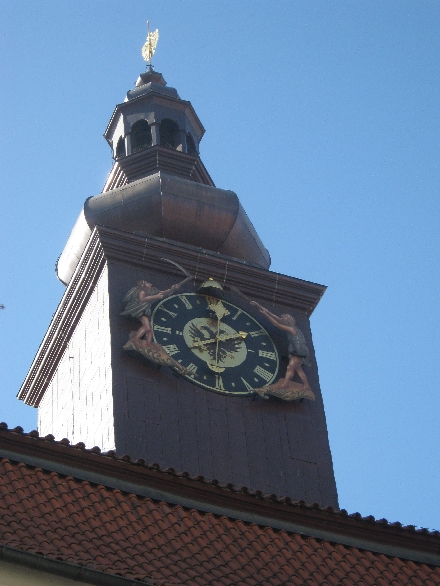
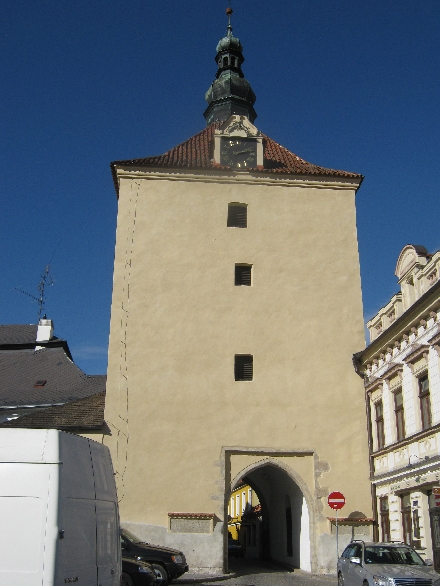
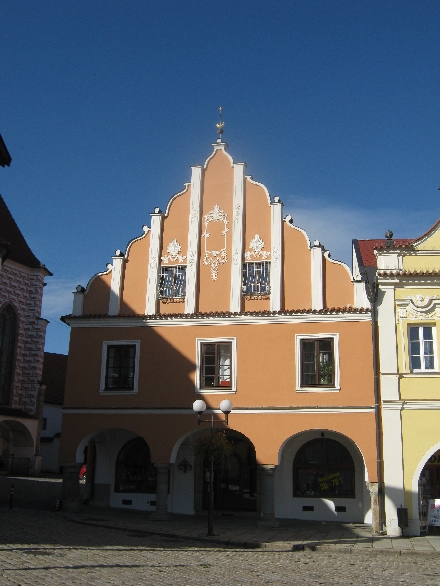

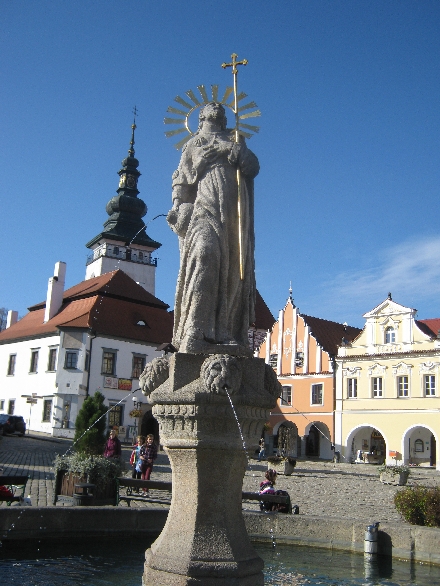
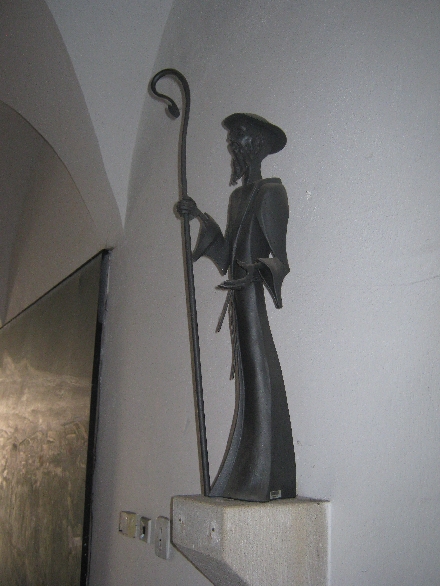
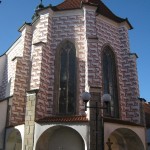
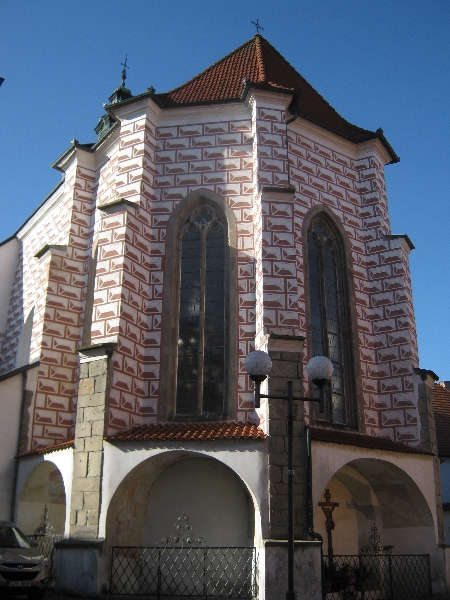

So beautiful! Pelhrimov is one of those towns I have not visited yet. I may have to. 😀 It very much reminds me of many other towns I have visited – ones that spring to mind are Letohrad, Havlíckuv Brod, Litomyšl…
A little correction – it námestí, with the hook above E but without the one above S.
It is beautiful Hana! So yes – you ought to plan a visit 🙂 Of the other towns you mention, we’ve been to Litomyšl http://rickyyates.com/litomysl/ & Letohrad, but have only driven through Havlíckuv Brod.
Many thanks for pointing out the error in my Czech spelling which I have now been corrected to the best that my blog will allow. ‘E’ with a little hook, is one of several diacritics which come out as ‘?’ if I try and use them. The same is true for ‘r’ with a little hook, which I am aware ought to be in ‘Pelhrimov’.
What a gorgeous place, Ricky and you saw it in the most beautiful of weather. I love the variety of architectural styles and also the way the buildings have been so skilfully restored to their full glory. What a pity their use doesn’t always match their beauty.
Indeed Perpetua – Pelhrimov is a gorgeous place and we certainly were very lucky with the weather. After very poor weather in September & very early October, the last three weeks have been nearer to what we’ve experienced in previous years at this time of year – an Indian Summer. We had our first real frost last night but bright sunshine once more today. I strongly concur with the last sentence of your comment. Sadly, this is far from being the first time of seeing a building of great architectural beauty, being currently used for inappropriate or dubious purposes 🙁